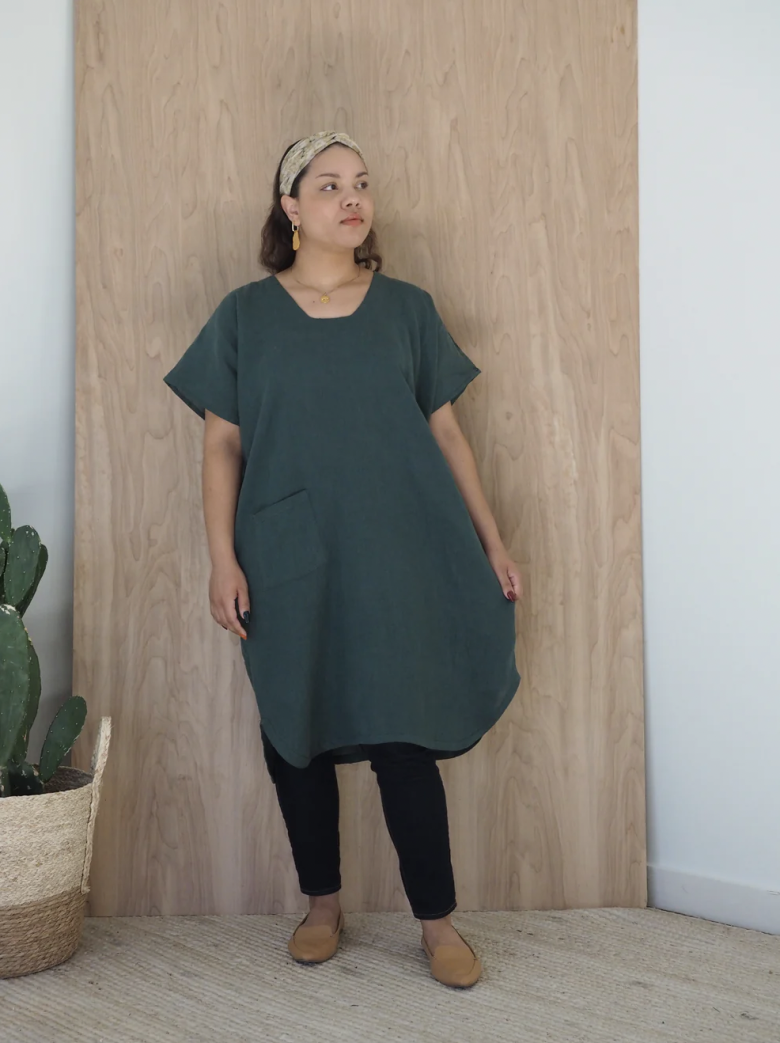From web-site:
Receive this pattern in your inbox for free by SIGNING UP TO THE NEWSLETTER!
Featuring a basic bodice block with a unique and beautiful neckline, this pattern will quickly become your next favorite wardrobe staple. The top features a boxy fit with a hem that sweeps right at the top of the hips. The tunic features a pocket and shirt-tail hem finished with a bias binding. Easily customize this pattern by shortening the top for a cropped look or adding a belt or second pocket to the tunic. The possibilities are endless with Yarrow!
This pattern is meant to fit oversized. If you fall between sizes we recommend sizing down or choosing sizing based on your chest measurement.
To provide accessibility to those in need, this pattern is permanently sold on a Pay What You Can basis or can be downloaded for free by signing up to the newsletter using the link above. Please note that due to this status it will never be put on sale. Thank you for supporting my small sustainable business with whatever means you are able to contribute.
Notions + Supplies Required:
OPTIONAL: 1/2" single fold bias tape (NOTE: This pattern includes a template for making your own bias tape from fabric), OPTIONAL: Edgestitch foot, blind hem footFabric Requirements:
Light-medium weight fabrics with moderate drape.
Cotton - chambray, batiste, voile. Linen - light to medium weight. Rayon - challis, poplin. Tencel. Silk Noil.
See photos for size chart and fabric requirements
You will receive the following files via PDF format upon payment:
- Yarrow Top & Tunic Sewing Instructions
- A4 / US Letter Print at Home File (42 pages)
- A0/Copyshop File (2 pages)
- US Copy Shop 36 x 107" file (for projector use)*All sewing pattern files are layered. A guide to layers is included in the pattern instructions.*
Fabric Waste Rating:
★ ★ ★
3 Stars - this pattern uses an average amount of waste which can be turned into alternate scrap projects or can be lessened by changing the cutting layout







